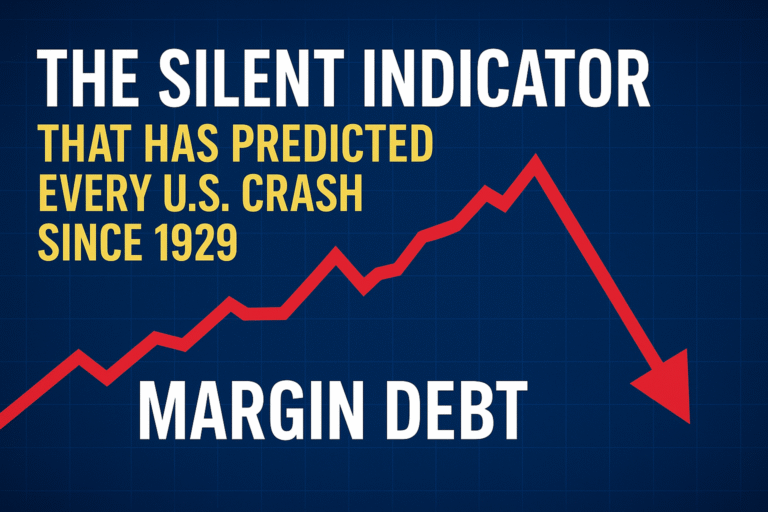
Bitcoin (BTC) surged to a fresh all-time high on July 11, 2025, topping $117,000 as bullish sentiment in risk assets gains strength. This historic breakout aligns with broader tech market momentum, notably NVIDIA’s (NVDA) climb to a $4 trillion valuation—underscoring Bitcoin’s increasing correlation with technology stocks.
As the Nasdaq Composite reached new highs and the S&P 500 followed suit, Bitcoin was lifted by favorable monetary signals and tightening supply conditions. The rally also pushed the iShares Bitcoin Trust ETF (IBIT) up by 15% year-to-date, including a 4.3% rise over the past month.
Crypto Week in Congress and Its Impact on Bitcoin
Bitcoin’s bullish move coincides with heightened political attention. The U.S. Congress is set to launch “Crypto Week”starting July 14, a critical event where lawmakers will debate several pivotal regulations. One of the headline proposals includes the GENIUS Act, aiming to establish a federal framework for stablecoins. A regulatory breakthrough could potentially boost institutional adoption, providing further validation for Bitcoin as a macro asset.
Signs of growing institutional interest are already visible. Circle (CRCL), issuer of the USDC stablecoin, saw its stock rise 2% on Thursday—up over 500% since its June 5 IPO. Trading platforms like Robinhood (HOOD) and Coinbase (COIN) also recorded solid gains.
Bitcoin: A Strong Hedge Amid Economic Uncertainty
Year-to-date, Bitcoin is up 26.4%, outperforming the SPDR S&P 500 ETF Trust (SPY), which gained 7% as of July 11. With ongoing trade tensions and tariff-induced inflation concerns, investors are viewing Bitcoin as a resilient hedge. Fed Chair Jerome Powell recently acknowledged Bitcoin as “virtual gold,” and investor Ray Dalio has continued to endorse Bitcoin as a hard asset to protect against looming debt risks.
Inflation Worries Reinforce Bitcoin’s Value Proposition
Bitcoin’s fixed supply—capped at 21 million coins—makes it inherently deflationary. As global governments ramp up money printing and import tariffs from the Trump administration threaten to spike prices, Bitcoin’s scarcity positions it as a compelling inflation hedge compared to traditional fiat currencies.
Corporate and Institutional Bitcoin Adoption Grows
Bitcoin is increasingly being added to corporate balance sheets. While MicroStrategy (MSTR) was an early adopter, other companies like GameStop (GME), Semler Scientific, and Rumble (RUM) are following suit. Additionally, Goldman Sachs significantly increased its exposure to Bitcoin ETFs earlier this year, highlighting rising institutional confidence in digital assets.
Potential Interest Rate Cuts Could Further Benefit Bitcoin
Despite the Fed’s recent hawkish tone, multiple officials have signaled the possibility of rate cuts later in 2025. Fed Governor Christopher Waller—a potential successor to Powell—suggested a July rate cut may be warranted, viewing tariff-induced inflation as temporary. Other Fed members like Mary Daly and Michelle Bowman also hinted at a more dovish stance, aligning with former President Trump’s calls for aggressive monetary easing.
Lower interest rates typically favor risk-on assets like Bitcoin, making it cheaper to hold non-yield-generating investments.
Bitcoin Miners Tap into the Booming AI Infrastructure Market
Bitcoin mining firms are expanding their capabilities into AI infrastructure. Companies such as Bitfarms are now using their high-density data centers to support artificial intelligence workloads. CEO Geoff Morphy noted that AI-related operations are significantly more profitable, trading at earnings multiples of 20–30x versus just 3–5x for traditional crypto mining.
With NVIDIA’s dominance in the AI chip market continuing to grow, there is an escalating need for scalable, energy-efficient infrastructure—something Bitcoin miners are uniquely equipped to provide.
New Bitcoin ETFs Offer Downside Protection for Cautious Investors
To make Bitcoin more appealing to conservative investors, fund managers are launching structured Bitcoin ETFs with built-in protection mechanisms. Calamos recently rolled out a series of “buffer ETFs,” including:
- Bitcoin Structured Alt Protection ETF – January (CBOJ)
- Bitcoin 90 Series Structured Alt Protection ETF – January (CBXJ)
- Bitcoin 80 Series Structured Alt Protection ETF – January (CBTJ)
Meanwhile, Innovator debuted the Uncapped Bitcoin 20 Floor ETF – Quarterly (QBF), which allows for full upside participation while limiting downside losses. These funds cater to risk-averse investors seeking exposure to Bitcoin without the typical volatility.
Final Take: Bitcoin’s Breakout is More Than Just Hype
According to crypto analyst Nic Puckrin, Bitcoin’s recent rally is not a full-blown bull run—but rather a strong move out of a tight $10,000 trading range that persisted for nearly two months. With regulatory clarity on the horizon, rising institutional interest, and increasing ties to tech and AI infrastructure, Bitcoin’s 2025 performance may just be getting started.




